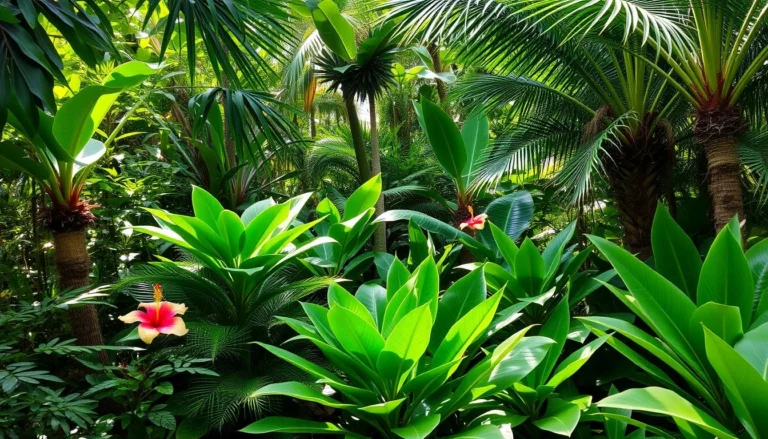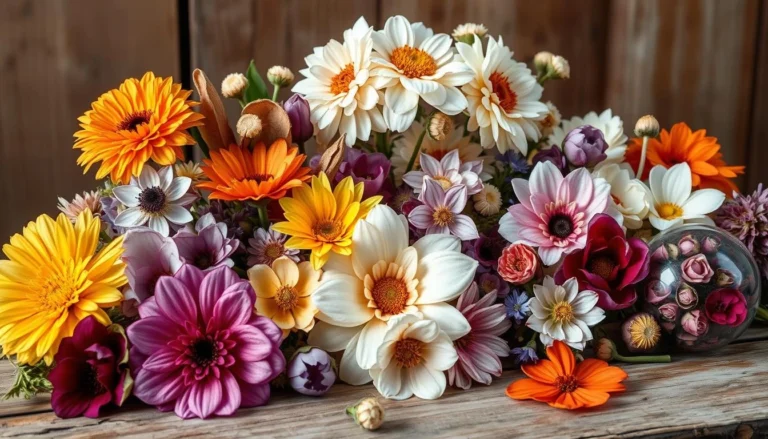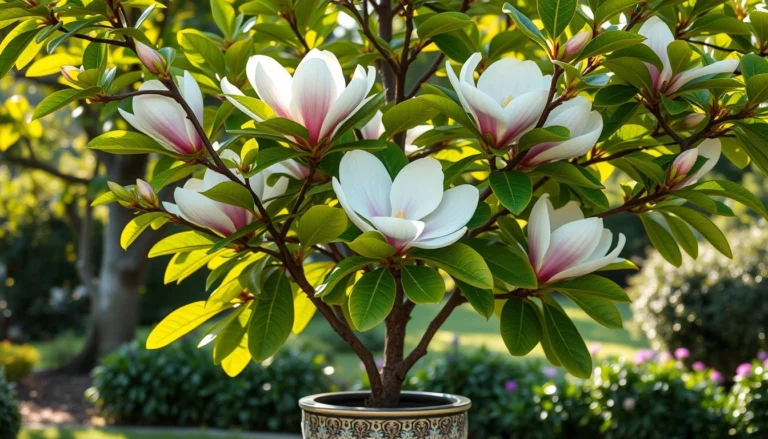“Maple Trees Revealed: 5 Exceptional Tips for Cultivating Stunning Maple Varieties”
Are you fascinated by the stunning fall colors of maple trees? Do you want to make maple syrup or improve your landscape with these trees? Well, you’re in for a treat. We’re about to share secrets to growing amazing maple varieties that will change your outdoor space.
Maple trees are a favorite in America for their bright colors, shade, and many uses. From the tall Sugar Maple1 to the small Japanese Maple1, the Acer genus offers many species. This guide will help you bring the beauty and usefulness of maples to your yard, whether you’re an expert or new to gardening.
Key Takeaways
- Discover the captivating world of maple trees and their diverse species
- Learn how to choose the right maple variety for your climate and landscape needs
- Uncover the secrets to proper planting, care, and maintenance for healthy, thriving maples
- Explore the vibrant fall foliage and maple syrup production potential of these iconic trees
- Discover how to prune and shape maple trees for optimal growth and aesthetic appeal
The Captivating World of Maple Trees
Exploring the Genus Acer
Maples belong to the genus Acer, which includes a wide variety of species2. This group includes the famous sugar maple (Acer saccharum) and the fast-growing silver maple (Acer saccharinum). It also includes the ornamental Japanese maples (Acer palmatum), offering many choices for homes and gardens3. Each type of maple has its own special features, like different leaf shapes and colors.
Diversity in Leaf Colors and Shapes
Maple leaves are incredibly diverse in shape and color2. Many maples have the classic palmate leaf with its distinctive lobes3. But, there are also species with longer, pointed leaves, like the hornbeam maple (Acer carpinifolium)3. In autumn, the leaves turn bright yellows, oranges, reds, and purples, adding beauty to any landscape2.
“The maple tree is not merely a plant. It is a work of art.” – Hiroshi Hayakawa
Maple trees are loved for their beautiful leaves and wide range of looks, making them a favorite in gardens. With over3 128 known species worldwide, Acer offers many options for those who love trees. From the well-known sugar maple to the beautiful Japanese maples, each has its own special qualities2.
Maple trees are known for their stunning leaves, whether they are the classic palmate type or the longer, pointed varieties3. The autumn colors of maples, ranging from golden yellows to fiery reds and oranges, make them a popular choice for gardens and outdoor spaces2.
Maple trees hold deep cultural meaning, symbolizing strength, beauty, peace, and wisdom in many cultures2. In Canada, the maple leaf is a national symbol. In Asian cultures, the Japanese maple is highly revered, showing the importance of these trees in our heritage2.
| Maple Tree Facts | Details |
|---|---|
| Number of Species | Over 128 worldwide3 |
| Habitat Adaptability | Can thrive in various environments, from mountainous regions to humid forests3 |
| Seed Dispersal | Maple trees spread their seeds widely through the wind for reproduction3 |
| Maple Syrup Production | Over 100 million gallons produced annually in North America, with 67% coming from Canada3 |
| Ecological Significance | Maples provide habitat and food for numerous animal species, including birds, insects, and small mammals3 |
The world of maple trees is a testament to the genus Acer’s amazing diversity and cultural importance. From the iconic sugar maple to the ornamental Japanese maple, these trees offer a wide range of choices for homes and gardens, each with its own charm2. Their stunning foliage and deep-rooted symbolism make them a cherished part of any landscape2.
Planting and Growing Maples
When picking a maple for your yard, think about its mature size, growth speed, and what it likes to grow in4. Hard maples, like the sugar maple, grow slower but offer great shade. Soft maples, like the silver maple, grow faster and do well in wet areas4. Make sure to check your space, soil, and weather to pick the right maple for you.
Choosing the Right Maple Variety
Maples love well-drained, slightly acidic soil and need partial shade to full sun4. Some can grow up to 100 feet tall, while others stay under 20 feet4. When planting, remove sod, loosen soil, and place the root ball right. Fill the hole with native soil and water well to help the tree grow.
Give the tree enough room for its roots and avoid areas with hard soil or too much water. This will help your maple tree thrive.
Site Selection and Preparation
- Check the maple’s size and growth rate to make sure it fits your space4.
- Test your soil’s pH and adjust it if needed to keep it slightly acidic for maples4.
- Pick a spot that gets the right amount of sun, as some maples need shade and others sun4.
- Get the planting area ready by removing sod and loosening the soil for better root growth4.
- Plant the root ball at the right depth, with the top of the root flare a bit above the soil4.
- Fill the hole with native soil and water well to settle the tree4.
- Put a 2-inch layer of mulch around the tree to keep the soil moist4.
By thinking about what each maple needs and preparing the site well, you can help your maple tree grow strong. Enjoy its beauty for many years.
Proper Care and Maintenance
Watering and Fertilizing Needs
Newly planted maples need regular water to grow strong roots5. Once they’re established, they can handle dry spells better5. But, they don’t need much fertilizer since they do well with the right sun, soil, and water5.
Watering new Japanese maples every 1-3 days is a good start6. As they grow, you can water them once a week6. In hot places, they might need more shade and water to avoid leaf damage6.
Red Maples in Atlanta usually don’t need a lot of fertilizer5. But, a balanced fertilizer in early spring can help them grow5. Japanese maples, on the other hand, need a balanced fertilizer in spring6.
Testing the soil in Atlanta’s clay-rich soil is key for Red Maples5. It helps figure out what nutrients they need for the best growth.
“Proper care and maintenance are essential for the long-term health and beauty of maple trees. By understanding their watering and fertilizing needs, you can help ensure your maples thrive for years to come.”
Maple Trees for Fall Foliage
Maples are famous for their stunning fall colors. Leaves turn into a mix of yellows, oranges, reds, and purples. Planting different maple types can make your yard a colorful sight all fall7.
Vibrant Hues of Autumn
The fall colors of maple leaves are a joy to see7. The ‘Acer platanoides ‘Crimson King” maple shows off bright scarlet. The ‘Acer tataricum’ maple shines with golden yellow7. By picking various maple types, your yard’s fall colors will last longer, celebrating nature’s change in color.
When picking maple trees for their fall colors, think about their size, growth, and where they grow best7. The ‘Green Mountain’ sugar maple grows big, up to 75 feet tall. It’s great for big yards7. The ‘Acer tataricum’ maple is smaller, perfect for smaller spaces, growing up to 20 feet tall7.
“The changing hues of maple leaves during the fall season are a true delight.”

By picking the right maple trees for your yard, you can make a beautiful fall display. It will impress you and your neighbors7. Discover the world of maple trees and turn your outdoor space into a colorful masterpiece7.
Maple Trees for Syrup Production
The sugar maple (Acer saccharum) is key for making maple syrup because its sap has more sugar than other maples8. Tapping and boiling sap to make syrup is hard work, but the homemade syrup is worth it8. If you have sugar maples, you can try making your own syrup, adding a special touch to your yard.
Maple syrup is made by boiling sap until it’s 66% sugar9. The sugar maple and red maple (Acer rubrum) are the top choices for syrup making9. To tap maple trees, they need to be at least 10 inches wide at 4.5 feet up9.
It takes 30-60 gallons of sap to make 1 gallon of syrup, based on the sap’s sugar level9. Sap can be stored at 38°F or lower9. The best time to tap is when it’s cold at night and warm during the day, as sap flows with the freeze/thaw cycle9.
| Maple Syrup Production Statistics | Value |
|---|---|
| Quebec province’s share of world maple syrup production | 70%8 |
| Canadian maple syrup exports in 2016 | C$487 million (approximately US$360 million)8 |
| Quebec’s share of Canada’s total maple syrup exports | Around 90%8 |
| Minimum sugar content for maple syrup in Canada | 66%8 |
| Maple syrup labeling requirement in the United States | Must be mainly derived from maple sap8 |
| Sugar content range in sap of sugar maple, black maple, and red maple trees | Approximately 2-5%8 |
Maple syrup making started with early settlers, who used augers to tap trees8. The first evaporator was patented in 1858, and by the American Civil War, flat pans replaced old kettles for boiling sap8. In the 1970s, new tech like plastic tubing and vacuum pumps made syrup making more efficient8.
Whether you have a few sugar maples or a big grove, making your own syrup is rewarding and tasty. With the right tools and effort, you can make a special syrup for your home.
Pruning and Shaping Maple Trees
Maintaining your maple trees’ health and beauty often needs careful pruning10. The right pruning techniques can remove dead or damaged branches. This helps keep the tree strong and looking good10. Regular pruning is key for your trees’ long-term health and beauty.
Techniques for Healthy Growth
The best time to prune maple trees is in late summer10. This time reduces sap loss and promotes new growth10. Young trees should wait until their third year to be pruned to avoid harm10.
Use the right tools like hand pruners and saws for pruning10. Sterilize them with alcohol and water to stop disease spread10.
Pruning keeps the tree’s structure strong and looks good10. It also improves air and sunlight, fighting off diseases10. Pruning helps find and remove sick or dead branches, keeping the tree healthy10.
In the Pacific Northwest11, maple trees vary from small to tall11. The best time to trim in Portland, OR is late spring and summer11. But, don’t cut off more than 25% of live growth in one season11.
Pruning can be done any time of year to avoid damage or hazards11. Reasons to trim include removing dead branches and improving appearance11.

By following these pruning tips, you can keep your maple trees healthy and beautiful for years.
Maple Trees in Landscaping
Maples add beauty and curb appeal to any landscape12. They can be used as specimen trees, in groups, or in mixed borders12. Their shapes, from round to cascading, make them great for any design13. Choosing the right maple tree can make your outdoor space stunning.
Enhancing Curb Appeal
Maple trees are loved for their curb appeal12. Red maples grow fast and look great, making them a yard focal point12. Their fall colors turn yards into stunning displays12.
There are many maple species to choose from13. You can pick a tall shade tree or a small ornamental one12. By picking the right tree, you can make your landscape beautiful and boost your property’s appeal.
| Maple Tree Variety | Height/Width | Fall Foliage | Landscape Use |
|---|---|---|---|
| Red Maple | 40-60 feet tall12 | Vibrant red | Specimen, shade, street tree |
| Sugar Maple | 60-75 feet tall | Orange, yellow, red | Specimen, shade |
| Japanese Maple | Dwarf to 20 feet tall13 | Red, purple, burgundy | Ornamental, specimen |
| Paperbark Maple | 20-30 feet tall and wide13 | Yellow, orange, red | Specimen, small yard |
Choosing the right maple tree can make your outdoor space beautiful12. Maples come in many shapes, colors, and sizes. They are perfect for adding beauty and interest to your landscape.
“Maple trees are the quintessential choice for adding year-round beauty and character to your outdoor living spaces.”
Maple Trees for Shade and Privacy
Maple trees are great for providing shade, which helps cool outdoor areas and saves on energy14. Their wide canopies make perfect spots for relaxing and having fun14. Big maple trees also block out unwanted views, adding privacy to your yard14.
When picking maple trees, think about how big they’ll get and how they’ll grow15. Sugar Maples can grow 75-100 feet tall and spread 50-75 feet wide15. Red Maples can reach 40-70 feet tall and spread 30-50 feet wide15. Silver Maples can grow 50-80 feet tall and spread 35-50 feet wide15. These trees are perfect for lots of shade and privacy.
For smaller areas, Japanese Maples are a good choice. They grow 15-25 feet tall and spread 20 feet wide15. They offer beautiful leaves and some shade, even in small spaces15. Their leaves and colors change with the seasons, adding beauty to your yard all year.
By placing maple trees wisely, you can make a shaded, private area outside your home14. This makes your home look better and provides a cozy spot for fun and relaxation14. Maple trees are durable, beautiful, and fit well in many landscapes.
Maple Trees and Wildlife
Maples are key to local ecosystems, offering food and homes for many animals16. Their leaves, flowers, and seeds feed insects, birds, and mammals16. The dense canopies and leaf litter provide shelter and nesting sites for wildlife16. By adding native maples to your yard, you help your local environment thrive and support biodiversity16.
Supporting Local Ecosystems
Maples are crucial in North American ecosystems, providing vital resources for wildlife1617. With about 200 species, they are found in the North Temperate Zone, especially in China16. They offer food, shelter, and nesting sites for many animals, keeping local habitats balanced.
- Maples are popular for lawns, streets, and parks because of their beauty and variety16.
- Some maples make maple syrup, while others are used for furniture due to their hardwood16.
- All maples produce samaras or keys, which are a food source for wildlife16.
- Maple leaves are often oppositely arranged on twigs, with many species having lobed leaves16.
Adding native maple species to your yard creates a thriving habitat for local wildlife1617. From tiny insects to large mammals, maples are essential for the health and balance of nature.
| Maple Species | Characteristics |
|---|---|
| Sugar Maple | Large maple, over 30 meters tall, commonly planted for shade16. |
| Red Maple | Large maple, over 30 meters tall, commonly planted for shade. Can live up to 100 years1617. |
| Silver Maple | Large maple, over 30 meters tall, commonly planted for shade. Can live up to 130 years1617. |
| Oregon Maple | Offers commercially valuable wood with bright-orange fall foliage16. |
| Sycamore Maple | Important shade and timber tree in Europe, with numerous ornamental varieties available16. |
Understanding the role of maples in ecosystems helps us support biodiversity and maintain nature’s balance1617. Whether planting new trees or preserving existing stands, maples are vital for our local environments’ health and vibrancy1617.
Maple Trees
Maple trees are loved for their beauty and usefulness in any landscape. They offer many benefits, making them a favorite among homeowners and gardeners18. These trees come in many species, each with its own special features and beauty. They are known for their stunning fall colors, providing shade, and even making maple syrup, making them a true gem in horticulture18.
Red maples (Acer rubrum) stand out, growing up to 70 feet tall18. Their leaves are 2 to 6 inches wide, with three lobes and sharp edges18. Sugar maples (Acer saccharum) can grow even taller, reaching 80 feet18. Their leaves are 3-5 inches wide, with five lobes and smooth edges18.
Silver maples (Acer saccharinum) are also beautiful, with five slender lobes and smooth edges18. Their leaves have a light green or “silver” underside. While red maples can handle a variety of conditions18, sugar and black maples have more sugar in their sap, making them great for syrup18.
By knowing the special traits of these maple species and following good planting and care tips, you can keep your maple trees healthy and beautiful for a long time19. They grow fast, resist pests, and offer stunning fall colors and shade. Maples are a true treasure that will make your landscape look and function better for years.
Whether you’re a homeowner, gardener, or nature lover, maple trees can make your outdoor space better20. With the right care, these amazing trees will flourish. They’ll become a stunning centerpiece and add many practical benefits to your property19.
Troubleshooting Common Maple Tree Issues
Maples are usually tough and resilient, but they can still face problems. Pests, diseases, and environmental factors can cause issues21. Common problems include maple borers, scale insects, Asian long-horned beetles, and deer damage21. Drought, compacted soil, and air pollution can also harm maple trees21.
Pests, Diseases, and Environmental Stressors
Maple trees can get sick or infested with pests like anthracnose, leaf spots, and tar spots22. These can make leaves look bad or even weaken the tree21. Drought, poor soil, and pollution can also stress maple trees21.
Watching your trees closely and acting fast can help. Getting advice from local experts can make a big difference21. Taking care to avoid root damage and ensuring enough water can protect your trees from diseases21.







